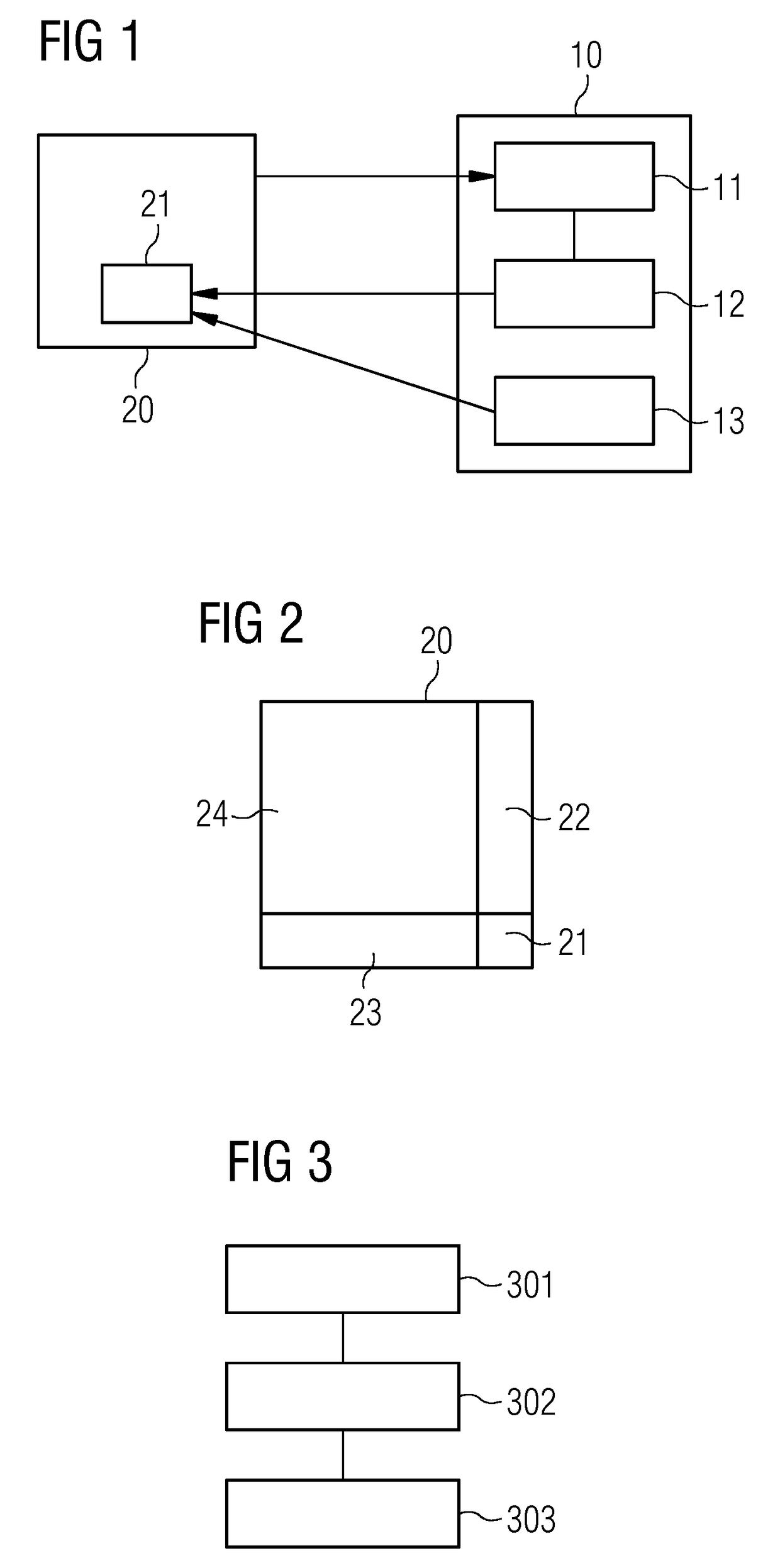Device and method for verifying a content of an analog document
a technology for document content and verification device, applied in paper-money testing device, instruments, computing, etc., can solve the problems of weak approach, inability to guarantee the integrity of analog content, and very limited use, so as to protect against document cloning and ensure the integrity of the conten
- Summary
- Abstract
- Description
- Claims
- Application Information
AI Technical Summary
Benefits of technology
Problems solved by technology
Method used
Image
Examples
Embodiment Construction
[0068]FIG. 1 shows a device 10 for verifying a content 24 of an analog document 20, which will be described in greater detail with reference to FIG. 2.
[0069]The device 1 comprises a scanning unit 11, a verification unit 12 and a printing unit 13. Although shown as being integrated into one module, the scanning unit 11, the verification unit 12 and the printing unit 13 may be also located remote from each other.
[0070]The scanning unit 11 scans the analog document 20 and generates a scan information. The scan information is then stored in a storing element 21 being provided on the analog document 20.
[0071]The storing element 21 may be a binary code being printed or glued to the analog document 20. The storing element 21 may also be a digital secure element being embedded in the analog document 20.
[0072]The verification unit 12 verifies the content 24 of the analog document 20 using the stored scan information.
[0073]In one embodiment, the scan information may correspond to a signature ...
PUM
 Login to View More
Login to View More Abstract
Description
Claims
Application Information
 Login to View More
Login to View More - R&D
- Intellectual Property
- Life Sciences
- Materials
- Tech Scout
- Unparalleled Data Quality
- Higher Quality Content
- 60% Fewer Hallucinations
Browse by: Latest US Patents, China's latest patents, Technical Efficacy Thesaurus, Application Domain, Technology Topic, Popular Technical Reports.
© 2025 PatSnap. All rights reserved.Legal|Privacy policy|Modern Slavery Act Transparency Statement|Sitemap|About US| Contact US: help@patsnap.com


